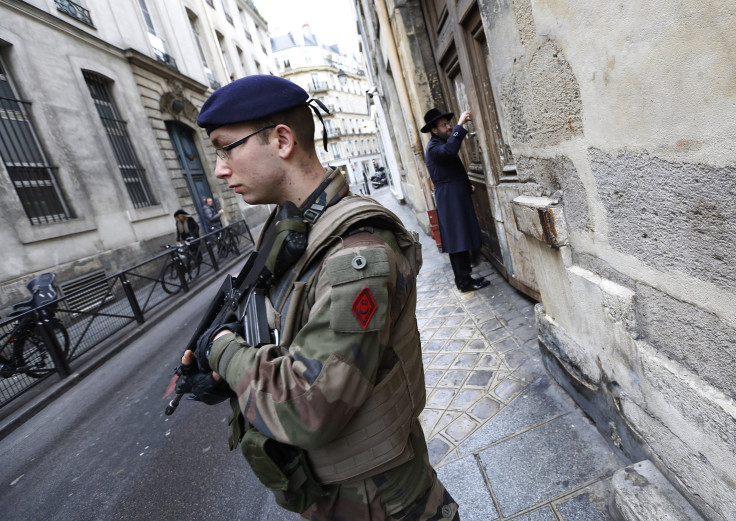'Lone Wolf' Terrorism: US, Europe Adopt New Security Tactics To Counteract Homegrown Threats

Said and Cherif Kouachi’s fatal shooting of 12 people in Paris last week cast an international spotlight on the global intelligence community's ongoing struggle to identify and eliminate “lone wolf’ terrorism. The Charlie Hebdo magazine massacre, along with a recent rash of other attacks, have made it clear that mass casualty events are no longer perpetrated solely by traditional militant groups.
Faced with the enhanced surveillance and collaboration from Western intelligence agencies after the Sept. 11, 2001, terrorist attacks, militant groups like the Islamic State or al Qaeda have increasingly called on sympathizers to act individually against their own communities. Other “lone wolves” develop their own ideology or reason for taking violent action against their neighbors. Traditional law enforcement tactics have proven ineffective at counteracting this new foe.
“The consequences of attacks from terrorist groups are higher than from lone wolves. However, the likelihood of a lone wolf attack happening is higher, precisely because it’s so difficult to prevent,” said Max Abrahms, a terrorism theorist with the Council on Foreign Relations. “Usually, authorities are able to foil attacks by intercepting communications among people. But lone wolves by definition are more solitary, and so the writing often isn’t on the wall.”
The Kouachi brothers, along with apparent co-conspirator and Paris supermarket hostage-taker Amedy Coulibaly, were each known to intelligence officials in Europe and the United States prior to the terrorist murders last week. All three were French citizens who lived among the communities that they later targeted for attacks, with known ties to domestic radical organizations. Cherif Kouachi, for example, once appeared on a French television documentary on local Muslims who were outraged by Western intervention in Iraq, and served prison time on terrorism charges in 2008.
Said Kouachi was never arrested for ties to radical groups, but U.S. and European authorities knew that he traveled to Yemen in 2011 to meet with al Qaeda preacher Anwar al-Awlaki, who publicly advocated for “lone wolf”-style attacks before he was killed in a U.S. drone strike, according to The Daily Beast. Coulibaly and the Kouachis were known members of France’s “Buttes-Chaumont” Islamist network, a group with ties to the Islamic State that trained on French soil, the Telegraph reports.
Known militant entities, such as the Islamic State group or Yemen’s al Qaeda in the Arabian Peninsula (AQAP), purportedly inspired the Kouachis and Coulibaly to commit their acts. But early indications suggest that neither group provided direct operational support or was in direct communication with the alleged terrorists at the time of the assaults.
Under the traditional paradigms of counterterrorism, law enforcement agencies have relied on surveillance and informants to foil major terrorist plots. But “lone wolves” operate independently from the known structure of Islamist militancy. A would-be terrorist doesn’t have to meet directly with al Qaeda or the Islamic State group to gain the expertise necessary to carry out a mass-casualty event.
“It used to be, even in the world of violent extremism, you had pockets of people who were separated by geography,” said John Cohen, a former counterterrorism coordinator at the U.S. Department of Homeland Security and a professor at Rutgers University in New Jersey. “Today, that’s all different. You no longer have to travel thousands of miles to meet up with people who share your view of an extremist ideology. You no longer have to go out into the woods and train in person. You can actually acquire materials, acquire expertise, acquire abilities while never leaving your house.”
The Islamic State group has especially embraced the potential of online propaganda, producing everything from pamphlets to music videos to attract recruits. Authorities found ISIS flags at Coulibaly’s hideout, and the 32-year-old made a video declaring his allegiance to the group despite there being no indication that he had engaged in direct contact with its leaders, Newsday reports.
It’s a problem that isn’t limited to Europe. Tamerlan and Dzhokhar Tsarnaev, the brothers responsible for the “lone wolf” Boston Marathon bombing that left three dead and hundreds injured in 2013, were purportedly inspired to commit their act after listening to al-Awlaki’s Internet sermons. Dzhokhar Tsarnaev later admitted that they learned how to make the pressure-cooker explosives used in the attack by reading AQAP’s instructions online. Similar “self-radicalization” motivated Man Haron Monis, a preacher in Australia who pledged solidarity with the Islamic State group in his deadly seizure of hostages at a Sydney café last December.
Without direct ties to link “lone wolf” terrorists to known radical entities, the U.S. Department of Homeland Security relies on the convergence of traditional tactics – undercover operations, surveillance and wiretaps – with psychological analysis of individuals who could pose a threat to their communities. Efforts are made to identify proactive “intervention strategies” to head off attacks before they can occur, such as mental health counseling and faith education. Rather than simply react to a prospective threat’s radicalization, law enforcement officials are making an effort to understand why that radicalization occurred in the first place.
“You hear a lot of emphasis from some in government about, ‘We have to counter the narrative.’ That may be true, but I think the bigger issue is we need to really understand why in Western Europe and Canada and the United States that a growing number of people seem to find resonance with the narrative of these [radical] groups, and figure out what those underlying issues are and address those underlying issues,” Cohen said.
© Copyright IBTimes 2024. All rights reserved.












